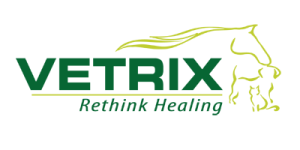Is a Raw Food Diet Good for Dogs?
If dogs could talk, we could solve many of the world’s problems–including a dog’s digestive issues. But instead, pet parents and vets find themselves playing a guessing game. Is the patient vomiting because he ate too much grass? Is that midnight diarrhea because somebody helped themselves to a bunch of pizza crust in the garbage can? Or is it something else?
In 2021, a paper was published on a study involving 7,015 dogs to examine the link between early-life factors like diet and digestive issues (like IBD) reported later in life. Interestingly, researchers found that dogs on a raw diet had a significantly lower risk of developing digestive problems later in life than dogs on a kibble diet.
What Is a Raw Food Diet?
To feed a dog a raw diet, you must provide a variety of foods, so the dog gets the required nutrients to live a healthy life. Commercial pet foods became popular in the 1960s, making it easy to forget that dogs can eat numerous vegetables, fruits, grains, and meats, all of which are essential to a balanced diet.
Advocates for the raw food diet say there’s no need to cook the food you give your dog to eat. Raw food contains more nutrients, and some veterinarians agree that feeding raw food is a good idea as long as there’s no risk for parasites (like with some meats). In that case, cooking the food before putting it in Fido’s bowl is a good idea.
What Makes the Raw Food Diet Good For Dogs?
- The Health Benefits: Dogs who eat a raw food diet tend to have healthier skin, smaller tools, cleaner teeth, and higher energy levels. It’s also easier to help dogs maintain a healthy weight on a raw diet than feeding kibble.
- No Dog Food Recalls: Pet food recalls happen, but there’s no need to worry about this when feeding a dog a raw food diet. You know what your dog is eating because you buy and prepare the ingredients.
- Reduced Risk of Diseases: This could’ve fallen under point one, but it deserves a callout. Why? Some studies show that a raw food diet can help prevent diabetes and reduce the possibility of arthritis in addition to the digestive system benefits discussed earlier. Fewer health issues mean fewer veterinarian bills over the life of your dog.
If you feed your dog a raw diet, you need to know what foods dogs can safely consume. This list of 40 human foods dogs can safely eat is an excellent place to start.
Reap the Raw Benefits
Digestion problems can appear in many different forms, and getting more intentional with diet is often a good first step in mitigating those problems. However, a raw diet can only solve some digestive and gastrointestinal issues. If you are considering switching your dog to a raw diet due to gastrointestinal problems, you should let your veterinarian examine your pup to ensure nothing more serious is going on before making the diet change.
Depending on the root cause of your dog’s digestive issues, your veterinarian may conclude that gastrointestinal surgery is necessary for your dog’s well-being before any recommended diet changes. If that’s the case, this is where Vetrix BioSIS Technology can help.
Want to learn more? Discover how regenerative medicine can help with gastrointestinal problems and surgery.
With the right balance and proper assessment of any digestive issues, your dog can thrive on a raw food diet.

